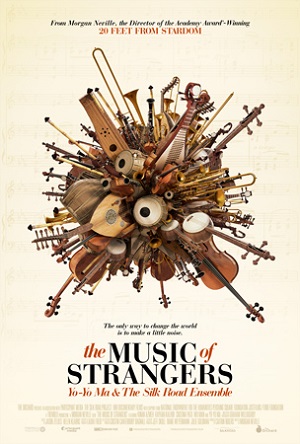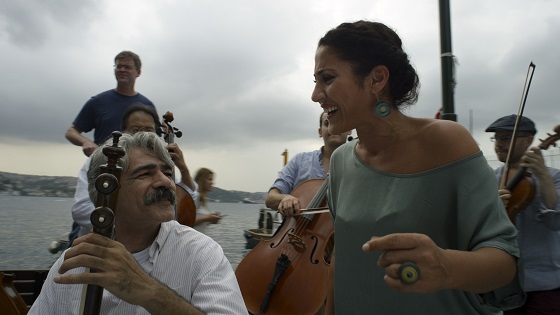The Music of Strangers, on the surface, seems as though it’s going to be a bland, effortless, pleasant but utterly unmemorable music doc that wouldn’t be out of place on VH1 or PBS. We’ve all seen these before. They were shown to us in music classes in Middle School, they litter the backwaters of the “Showbiz Documentaries” section of Netflix. They’re made to be watched once by middle aged, middle class folks wanting to feel cultured, and it’s not really a bad way to do so but requires little to no effort.
But then you actually watch it, and much like Yo-Yo Ma’s music, the film proves to be far more exciting and meaningful than its veneer of class would imply.
Morgan Neville won an Oscar a few years ago with his film 20 Feet from Stardom, set around backup singers and their history. The film was charming, interesting, made with conviction but didn’t exactly re-invent the wheel. Especially after its victory came by defeating the beautiful, horrifying masterpiece The Act of Killing, the film seemed rather lackluster compared to the greats in the genre, but it was definitely not a bad piece and had more going on than one would expect from the outset.
The Music of Strangers functions essentially the same way. It’s not a grand, must-see reinvention or experiment, nor a peerless example of the form, but it’s actually quite enjoyable and intelligent for what it is.
It follows the journeys of cellist Yo-Yo Ma and his Silk Road Project, a band of the best folk and classical musicians from around the world. The list of musicians includes the critically acclaimed Chinese folk instramentalist Wu Man, Galician bagpiper Cristina Pato and Iranian kamencheh player Kayhan Kalhor, a man sometimes credited for single-handedly reviving traditial Kurdish and Persian music in his home country.
The film does well handling the many narratives of the band, giving each one time to explore their background, the background of their music, and how their views on the world impact their art. Much like the band itself, the film synthesizes these stories without dilluting them. The music is about melting all styles of world classical music together, not to make it “accessible” but rather as a form of cultural exchange. The thesis seems to be that culture, like a shark, must keep moving lest it dies. The goal of Ma and the Project is that of simultenously celebrating the roots of these musics but also exploring exactly where they all can still go.
It’s a fascinating proposition, but the film doesn’t start there. It really shines when following Syrian flautist Kinan Azmeh. In the light of the ongoing civil war, Azmeh questions his art and its place. He wonders whether or not its more worth it to continue playing or pick up a sign and protest. Yet his music acts as his tie to his culture as his homeland burns. He visits refugee camps and teaches the arts to children, and it’s the music that acts as a stabilizer for his life. It’s a subtle, thoughtful message, handled well by Neville.
I enjoyed The Music of Strangers quite a lot. It’s no masterpiece, nor necessarily worth multiple viewings, but it’s a strong effort from a fine documentarian. It features incredible music and a surprisingly thoughtful execution and is well worth the price of admission.









Comments on this entry are closed.